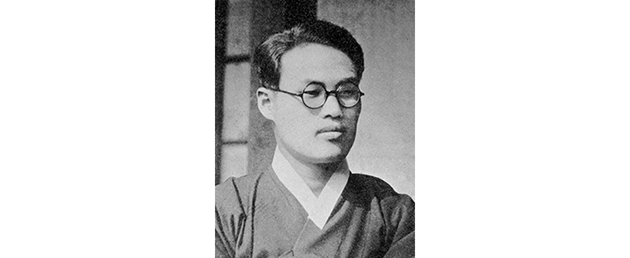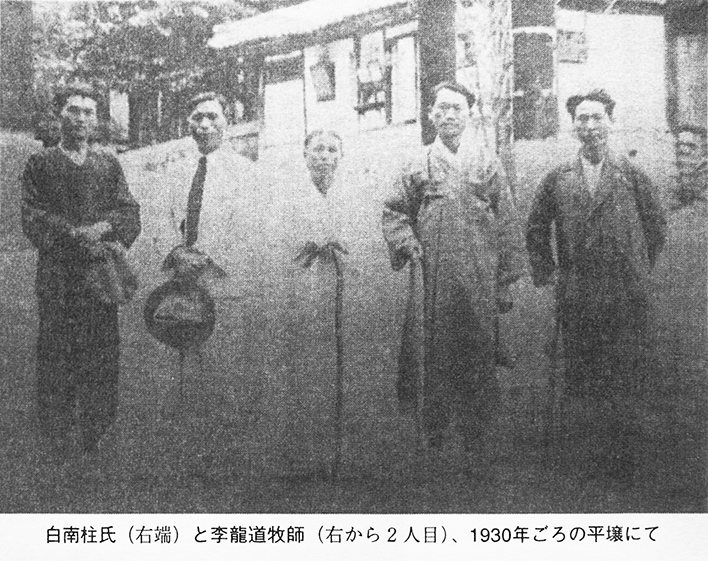Kim Seong-do, the woman who created the Divine Principle
The first section about Kim Seong-do is by Graham C. Lester
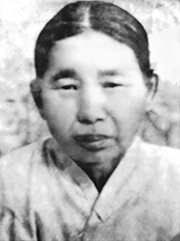
▲ Kim Seong-do 金聖道 (1883 – April 1, 1944)
Kim Seong-do is the most important of the Korean forerunners of the Unification movement, yet we hear very little about her. Most, if not all, of the key teachings of the Divine Principle originated with her, as I will show. She came up with these teachings in 1923, when Sun Myung Moon was only three years old. Her theology was later taken up by other sects in Korea, including Lee Yong-do’s group, Park Tae-seon’s Olive Tree Movement, and the Israel Monastery of Kim Baek-moon. For better or worse, she was the one who started it all.
Kim Seong-do came from Cheolsan, which is on the western coast of North Korea. She was the second wife of a prosperous Confucianist named Chung Hang-jun. His first wife had died and the children of his concubines were not legally entitled to inherit, so he married Kim Seong-do when he was 45 and she was 19. After her marriage Kim converted to Christianity, which greatly displeased her husband.
According to Sun Myung Moon himself, Kim Seong-do would get up at 1am and pray through the night, receiving revelations directly from God. Kim’s grandson, a 36 couple named Chung Su-won, has explained that she received her first revelation from Jesus on April 2, 1923. This would have been on the morning immediately after Easter Sunday, which in 1923 fell on April 1. This was the original Easter revelation of the Principle.
Kim claimed that during this Easter revelation Jesus told her directly that the fall of man was a premature sexual relationship between Adam and Eve. She also said that Jesus had taught her about the grieving heart of God. She claimed that Jesus told her that God’s two greatest heartaches were his inability to prevent the fall of man and the rejection and crucifixion of Jesus. It was Kim who taught that Jesus had been mistreated during his childhood and that his real birthday was January 3.
She announced that Christ would return as a Korean man, and told married couples to abstain from sex until this new messiah arrived to establish a purified blood lineage.
According to Michael Breen’s book, Sun Myung Moon, The Early Years, 1920-53, Kim “Wrote Jesus’ words out on twelve large strips of paper six foot long by one foot wide. She was told to teach what she had learned. Her minister said it was the work of the devil, but her story got round and soon many Christians began to visit her. As interest grew, the Presbyterian Church expelled her.”
Kim’s “revelation” that the fall was sexual came after her own pastor had run into trouble because of accusations of adultery. We should also bear in mind that when we use the term “concubine” today in relation to the Korean slave system that existed around 1900, when Kim was in the early years of her marriage, we are really using it as a polite euphemism for a sex slave. Perhaps Kim’s husband’s use of sex slaves also colored her view that lust is the root of all evil. It is interesting to speculate that the Unification Theology, which has been used to justify so much shameless adultery and concubinage over the years, might have been first concocted as a sort of proto-feminist condemnation of those same abuses.
After Kim’s insistence on spreading her revelations led to her being kicked out of her Christian church in 1927, she formed her own church in Cheolsan called the Chang Mak Church. She refused to put up a cross at her new church because of her belief that the crucifixion had not been God’s will, but a tragedy. Hak Ja Han’s maternal grandmother (Soon-ae Hong aka Daemo-nim’s mother) was one of the church members. The congregants referred to Kim as the “New Lord” and her church was named the Holy Lord Church.
On December 16, 1941, Kim was arrested by the Japanese and imprisoned for a hundred days. She was greatly weakened by this experience and died on April 1, 1944, aged 62. While Kim was imprisoned the Japanese burned her records; these would otherwise have become the earliest manuscripts of the Principle. Her church was taken over by Ho-bin Huh and came to be known as the Inside Belly Church because of Huh’s belief that the messiah would soon be born from her womb.
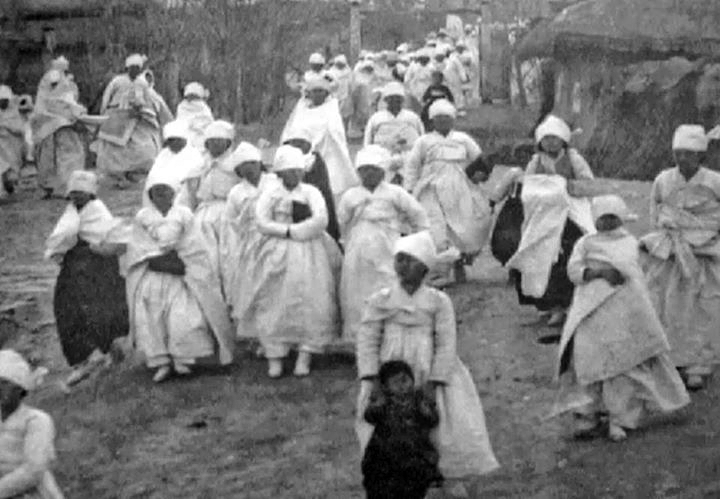
▲ Members of the Inside Belly Church
Kim Seong-do came up with these central ideas of the Divine Principle: 1) the broken heart of God; 2) the sexual fall; 3) the death of Jesus not being God’s plan; 4) the return of Christ to Korea, the new chosen nation; 5) the change of blood lineage through the messiah. There are probably also other aspects of Divine Principle that originated with Kim that are yet to be identified.
Sun Myung Moon did for Kim Seong-do what Saint Paul did for Christianity by spreading her teachings throughout the world, but he pretended that he had received the teachings himself through personal revelation, and only on rare occasions let out the truth, which was that he had been taught the Principle by Korean sects that had learned it ultimately from Ms. Kim.
The Principle that Moon started scribbling on the walls of his shack in Busan after his release from Pyongyang was essentially a re-presentation of the theology that Kim Seong-do had formulated a generation earlier, and that Moon had learned second-hand from her followers and imitators. In justice there should be statues of Kim Seong-do at all the Unification Church headquarters and seminaries, and there should be a photograph of her in every copy of the Divine Principle.
Sources:
1. Sun Myung Moon (Unification Church founder), http://www.tparents.org/Moon-Talks/sunmyungmoon71/SM711227.htm
2. Chung Su-won (Unification Church 36 couple), http://www.tparents.org/Library/Unification/Talks1/Chung/Chung-860400.htm
Kim Seong-do made the base for Moon to advance his claims. However, there were also other sources for the Divine Principle.
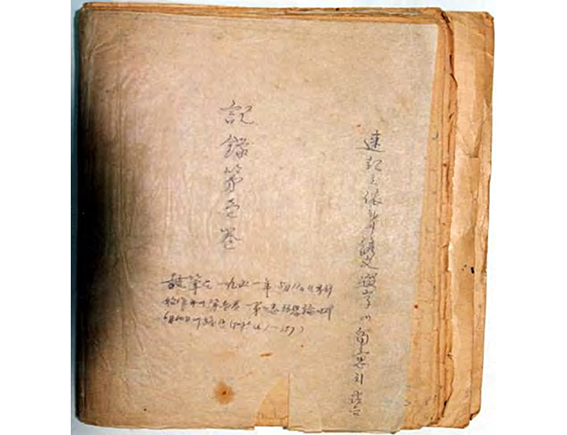 ▲ The cover of the 1952 Wolli Wonbon (Divine Principle). The note books were hand copied by followers. There may have been about 120 hand-written pages in two note books.
▲ The cover of the 1952 Wolli Wonbon (Divine Principle). The note books were hand copied by followers. There may have been about 120 hand-written pages in two note books.
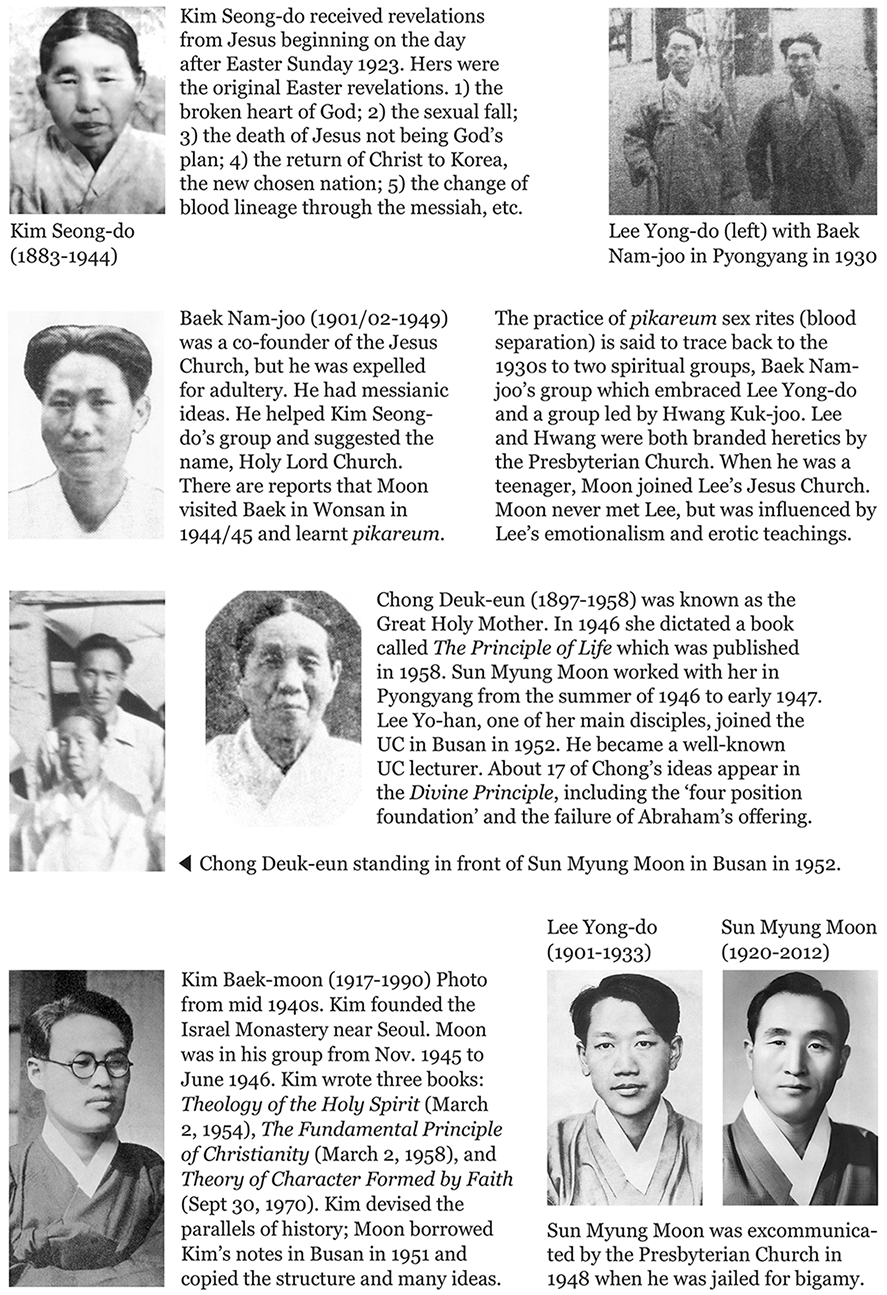
▲ Here is a chart of some of the small spiritual groups active in Korea from the 1920s. Rev. Moon studied the ideas of all of them. Baek Nam-joo taught about the three ages of providential history. Rev. Lee Yong-do heavily influenced both Rev. Moon and Miss Kim Young-oon. She had met him in person; Rev. Moon did not, but he did join Lee’s church as a teenager and a pastor from that church performed his marriage to his first wife, Choi Seon-gil. Kim Baek- moon devised the parallels of history which culminated in 1917, the year of his own birth.
The Divine Principle was mainly organised by Eu Hyo-won after he joined at the end of 1953. He referenced the work of Kim Baek-moon and Chong Deuk-eun, as had Moon. However, only Moon is credited with the revelations contained in the Divine Principle.
LINK 原理原本 The Original Principle, Wolli Wonbon (May 10, 1952)
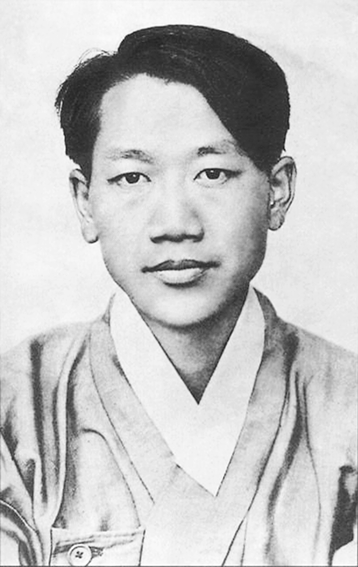
▲ Lee Yong-do 李龍道 (April 6, 1901 – October 2, 1933)
Lee Yong-do was a role model for Moon, who as a teenager attended a church founded on his ideas in Myungsudae, Seoul. Moon never met Lee, but his ideas also influenced the Divine Principle.
Park Seong-won: “Lee Yong-do was a revivalist who used hymn singing in the most appropriate way at revivals. Music is more effective than words in touching the minds of intuitive people. Thus Lee took advantage of the musical susceptibility of the Koreans. In employing singing in the worship, a fundamental difference occurred between the 1907 Great Revival and Lee Yong-do’s revival.” page 85 of Worship in the Presbyterian Church in Korea: its history and implications
Kim Young-oon attended the revival meetings of Lee Yong-do in her late teens, and wrote about her experiences. He was perhaps the main reason she decided to follow Sun Myung Moon in 1955. Kim’s experience when joining
Kim Young-oon – it all ended in flames and tears
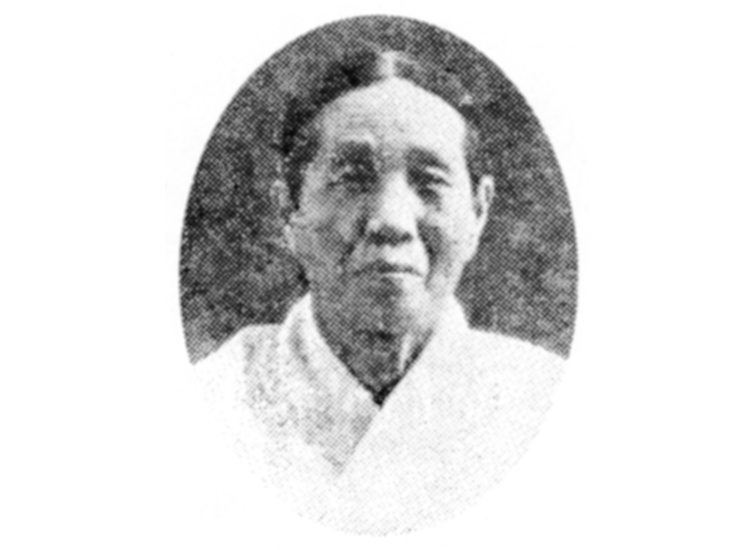 ▲ Chong Deuk-eun 丁得恩 정득은 (1897-1958 )
▲ Chong Deuk-eun 丁得恩 정득은 (1897-1958 )
Moon first met Chong Deuk-eun in Pyongyang in June 1946, and had a pikareum sex ritual with her. They worked together until February 1947 when she moved south to Seoul. Moon listened to her teachings and took about 17 ideas for the 1952 Wolli Wonbon (Divine Principle) from her theology.
In 1947 she dictated notes to a follower at Mount Samgak, near Seoul, where she had gathered a small group of disciples. The Principle of Life book containing those notes was published in 1958, some months after her death.
生의 原理 The Principle of Life
From her Moon took the concept of the four position foundation, the failure of Abraham’s offering and other points about the fall of man, etc. More about Chong Deuk-eun is explained HERE
Kim Baek-moon developed the Parallels of History, taking ideas from Paek Nam-ju 白南性. Moon studied with Kim Baek-moon for six months in 1945-1946.
Kim Baek-moon’s first book was 聖神神学 Theology of the Holy Spirit
(published on January 25, 1954) It had 600 pages.
基督教根本原理 Fundamental Christian Principles
(January 1, 1958) had 844 pages
信仰人格論 Theory of Character Formed by Faith
(September 30, 1970) had 400 pages
Kim Baek-moon spent three years at a theological seminary. (Sun Myung Moon never went to any university or seminary, and was never ordained. Moon was excommunicated in 1948 for his bigamy and pikareum sex rituals.)
According to several sources Moon visited Paek Nam-ju in Wonsan in 1944 or 1945.
The first printed Divine Principle book was published in 1957. It has been revised many times, with parts added and parts removed. For example in the 1952 version Jesus was married. In the 1957 book, Jesus failed to marry! The DP has been customized for different countries, for example Japan.
In the same way, Moon’s “Autobiography” has been through a number of revisions by a team of editors to make it more attractive to the target audience. In the process inconvenient facts, including many that are very well known to church members, have been omitted.
PDF Review of Moon’s “Autobiography” by Professor George Chryssides.
▲ 白南柱氏 (右端) と李韻道牧師 (右から2人目) 、 1930年ごろの平壌にて
Mr. Paek Nam-joo 白南柱 (right) and Mr. Lee Yong-do 李韻道 (second from right) in Pyongyang 平壌 circa 1930.
From the left, the remaining three are: Park Seung-geul 朴承傑 (in black) and Lee Ho-bin 李浩彬 who frequently worked together; and the woman standing in the center may well be Yoo Myung-hwa 劉明花, the Goddess of Wonsan 元山 who claimed to be the incarnation of Jesus after a spiritual experience she had in around 1927. Lee Ho-bin 李浩彬 was the leader of the Jesus Church and he was asked by Moon to officiate at his marriage to Choi Seon-gil 催先吉. According to Michael Breen, Lee Ho-bin traveled by train from Pyongyang to officiate.
History and theology of Korean pentecostalism: Sunbogeum (pure gospel) pentecostalism (2003)
by Kim Ig-Jin
Today, there are about 92 Christian sectarian groups in Korea. The total of followers amounts to 180,000. Almost 35 persons fancy themselves to be the re-incarnated Jesus or Jesus at His second coming and 12 claim to be god.76 Heretics originate either from rationalism (liberalism) or from mysticism. Rationalistic heretics are generally beyond discussion because they pose as theologians while mystical heretics do become an issue.77
The main mystical heretics in Korea have their origin in the 1930s. Under Japanese oppression and ecclesiastical lukewarmness, there not only arose Yong-Do Yi’s spiritual revival meetings, but also moral perfectionist (Mr. Guk-Ju Hwang) and counterfeit prophecies (Mrs. Myeong-Hwa Yu, Mr. Jun-Myeong Han, and Mr. Nam-Ju Paek). Especially, Guk-Ju Hwang and Nam-Ju Paek fell into religious adultery, which implies the typical analogy between religious trance and sexual ecstasy.78 Such activities were suppressed until the end of the Korean War (1953), but then, they broke out. The Unification Church of Seon-Myeong Moon (1920-2012), which was organized in 1954, and the Revival Society of Jesus Evangelization of Korea by Tae-Seon Park (1917-1990), which was organized in 1955, are the best examples.79
Here, we are concerned about the view that Yong-Do Yi (1901-1933) was the root of the Korean heretical movement. Yeong Gwan Park writes, “Mr. Yong-Do Yi fell from insane mysticism to the idea of an interchanging spirit-body, which brought forth mixed-adultery.”80 But, most scholars and especially Jong-Ho Byeon, who devoted his life to vindicating Yong-Do Yi’s ministry, denied that his mysticism became the direct root of Korean heretics. Today we know that he had nothing to do with promoting the principle of mixed-adultery, which originated from Guk-Ju Hwang and Nam-Ju Paek. Nevertheless, Yong-Do Yi made the mistake of having fellowship with those who had been excommunicated, which was why he was also rejected by the church. His heart and intention were too good to do any harm, but he lost the balance of his God-given-reason. He was a man deceived, but not deceiving.81 Yet, he might have deserved indirectly to be called the father of Korean mystical heretics.
Korean heretics mixed the teaching of the Bible with traditional Eastern thought, and then produced their own structures which are expressed through shamanistic spirituality. Koreans, who were familiar with shamanism, were vulnerable to such syncretism.82Having pursued mystical trance without thoroughgoing repentance and theological discretion, Korean mystical heretics were entrapped in the snare of the cunning dark power.
… All such problems display a syncretistic religious climate in Korea discussed in previous chapter.
Chong Deuk-eun – Great Holy Mother
Where Moon got his theology from
Newsweek on the many Korean messiahs of the 1970s
Orthodoxy and heresy in Korean church history.
FFWPU / UC theologians are deceiving members and covering up for Sun Myung Moon

